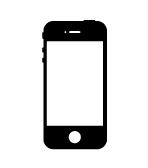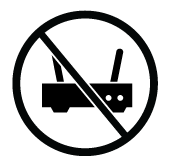Mobile Fact Sheet (original) (raw)
Large shares of Americans are connected to the world of digital information while “on the go” via smartphones and other mobile devices. Explore the patterns and trends that have shaped the mobile revolution below.
To better understand Americans’ smartphone and broadband adoption, Pew Research Center surveyed 5,733 U.S. adults from May 19 to Sept. 5, 2023. Ipsos conducted this National Public Opinion Reference Survey (NPORS) for the Center using address-based sampling and a multimode protocol that included both web and mail. This way nearly all U.S. adults have a chance of selection. The survey is weighted to be representative of the U.S. adult population by gender, race and ethnicity, education and other categories.
Polls from 2000 to 2021 were conducted via phone. For more on this mode shift, please read our Q&A.
Here are the questions used for this analysis, along with responses, and its methodology.

Mobile phone ownership over time
The vast majority of Americans – 97% – now own a cellphone of some kind. Nine-in-ten own a smartphone, up from just 35% in Pew Research Center’s first survey of smartphone ownership conducted in 2011.
Mobile phone ownership
% of U.S. adults who say they own a …
| Year | Cellphone | Smartphone |
|---|---|---|
| 10/27/2002 | 62% | |
| 11/30/2004 | 65% | |
| 2/9/2005 | 66% | |
| 12/31/2005 | 67% | |
| 3/28/2006 | 66% | |
| 4/6/2006 | 73% | |
| 9/5/2007 | 76% | |
| 12/2/2007 | 75% | |
| 1/13/2008 | 77% | |
| 5/11/2008 | 78% | |
| 8/10/2008 | 82% | |
| 12/20/2008 | 84% | |
| 1/27/2009 | 85% | |
| 4/19/2009 | 85% | |
| 9/14/2009 | 84% | |
| 12/27/2009 | 83% | |
| 1/19/2010 | 80% | |
| 5/30/2010 | 82% | |
| 9/13/2010 | 85% | |
| 11/1/2010 | 84% | |
| 11/24/2010 | 82% | |
| 11/28/2010 | 82% | |
| 12/21/2010 | 81% | |
| 3/20/2011 | 86% | |
| 5/22/2011 | 83% | 35% |
| 8/26/2011 | 84% | |
| 12/21/2011 | 87% | |
| 1/8/2012 | 88% | |
| 1/15/2012 | 87% | 39% |
| 2/19/2012 | 88% | 45% |
| 4/3/2012 | 88% | 46% |
| 8/5/2012 | 87% | 44% |
| 8/7/2012 | 89% | |
| 9/6/2012 | 85% | 45% |
| 9/23/2012 | 88% | 43% |
| 9/30/2012 | 89% | |
| 10/14/2012 | 88% | |
| 11/4/2012 | 89% | |
| 11/10/2012 | 84% | 46% |
| 12/9/2012 | 87% | 45% |
| 12/16/2012 | 88% | |
| 1/6/2013 | 89% | 51% |
| 5/19/2013 | 91% | 56% |
| 7/14/2013 | 90% | 53% |
| 7/28/2013 | 91% | 53% |
| 9/16/2013 | 89% | 54% |
| 9/30/2013 | 91% | 55% |
| 10/6/2013 | 92% | 58% |
| 1/5/2014 | 92% | 55% |
| 1/12/2014 | 90% | 58% |
| 1/26/2014 | 91% | 55% |
| 2/18/2014 | 90% | |
| 4/27/2014 | 92% | |
| 9/21/2014 | 91% | |
| 12/21/2014 | 89% | 59% |
| 4/12/2015 | 92% | 67% |
| 7/12/2015 | 92% | 68% |
| 11/15/2015 | 91% | 69% |
| 4/4/2016 | 92% | 72% |
| 5/3/2016 | 92% | 70% |
| 11/6/2016 | 95% | 77% |
| 1/10/2018 | 95% | 77% |
| 2/7/2019 | 96% | 81% |
| 2/8/2021 | 97% | 85% |
| 9/5/2023 | 97% | 90% |
Note: The vertical line indicates a change in mode. Polls from 2002-2021 were conducted via phone. In 2023, the poll was conducted via web and mail. For more details on this shift, please read our Q&A. Refer to the topline for more information on how question wording varied over the years. Respondents who did not give an answer are not shown.
Source: Surveys of U.S. adults conducted 2002-2023.
PEW RESEARCH CENTER
Who owns cellphones and smartphones?
Substantial majorities of Americans across a wide range of demographic groups are cellphone owners. The same is true for smartphone ownership – though some differences do emerge, particularly by age, household income and level of formal education.
% of U.S. adults who say they own a __, by …
| Ages 18-29 | 30-49 | 50-64 | 65+ | |
|---|---|---|---|---|
| Cellphone | 99 | 99 | 98 | 94 |
| Smartphone | 97 | 97 | 89 | 76 |
| Cellphone, but not smartphone | 1 | 2 | 8 | 17 |
Note: Respondents who did not give an answer are not shown.
Source: Survey of U.S. adults conducted May 19-Sept. 5, 2023.
| Men | Women | |
|---|---|---|
| Cellphone | 97 | 97 |
| Smartphone | 91 | 90 |
| Cellphone, but not smartphone | 6 | 7 |
Note: Respondents who did not give an answer are not shown.
Source: Survey of U.S. adults conducted May 19-Sept. 5, 2023.
| White | Black | Hispanic | Asian* | |
|---|---|---|---|---|
| Cellphone | 97 | 96 | 98 | 99 |
| Smartphone | 91 | 84 | 91 | 97 |
| Cellphone, but not smartphone | 6 | 12 | 6 | 2 |
* Estimates for Asian adults are representative of English speakers only.
Note: White, Black and Asian adults include those who report being only one race and are not Hispanic. Hispanics are of any race. Respondents who did not give an answer are not shown.[ ](White and Black
adults include those who report being only one race and are not Hispanic.
Hispanics are of any race. Respondents who did not give an answer are not
shown.)Source: Survey of U.S. adults conducted May 19-Sept. 5, 2023.
| Less than 30,000∣30,000 | 30,000∣30,000- 69,999∣69,999 | 69,999∣70,000- 99,999∣99,999 | 99,999∣100,000+ | |
|---|---|---|---|---|
| Cellphone | 94 | 98 | 98 | 99 |
| Smartphone | 79 | 90 | 94 | 98 |
| Cellphone, but not smartphone | 14 | 8 | 3 | 1 |
Note: Respondents who did not give an answer are not shown.[ ](White and Black adults include those who report being only one race and are not Hispanic. Hispanics are of any race. Respondents who did not give an answer are not shown.)Source: Survey of U.S. adults conducted May 19-Sept. 5, 2023.
| High school or less | Some college | College graduate+ | |
|---|---|---|---|
| Cellphone | 95 | 98 | 99 |
| Smartphone | 83 | 92 | 97 |
| Cellphone, but not smartphone | 12 | 5 | 2 |
Note: Respondents who did not give an answer are not shown.
Source: Survey of U.S. adults conducted May 19-Sept. 5, 2023.
| Urban | Suburban | Rural | |
|---|---|---|---|
| Cellphone | 97 | 98 | 97 |
| Smartphone | 91 | 93 | 87 |
| Cellphone, but not smartphone | 6 | 5 | 10 |
Note: Respondents who did not give an answer are not shown.
Source: Survey of U.S. adults conducted May 19-Sept. 5, 2023.
| Rep/Lean Rep | Dem/Lean Dem | |
|---|---|---|
| Cellphone | 97 | 98 |
| Smartphone | 92 | 91 |
| Cellphone, but not smartphone | 6 | 7 |
Note: Respondents who did not give an answer are not shown.
Source: Survey of U.S. adults conducted May 19-Sept. 5, 2023.

Smartphone dependency over time
Today, 15% of U.S. adults are “smartphone-only” internet users – meaning they own a smartphone, but do not have home broadband service.
Smartphone dependency
% of U.S. adults who say they do not use broadband at home but own smartphones
| | U.S. adults | | | ------------- | --- | | 2013 | 8% | | 2015 | 13% | | 2016 | 12% | | 2018 | 20% | | 2019 | 17% | | 2021 | 15% | | 2023 | 15% |
Note: The vertical line indicates a change in mode. Polls from 2013-2021 were conducted via phone. In 2023, the poll was conducted via web and mail. For more details on this shift, please read our Q&A. Refer to the topline for more information on how question wording varied over the years. Respondents who did not give an answer are not shown.
Source: Surveys of U.S. adults conducted 2013-2023. Data for each year is based on a pooled analysis of all surveys containing broadband and smartphone questions fielded during that year.
PEW RESEARCH CENTER

Who is smartphone dependent?
Reliance on smartphones for online access is especially common among Americans with lower household incomes and those with lower levels of formal education.
Smartphone dependency by age
% of U.S. adults who are smartphone dependent, by age
| | Ages 18-29 | 30-49 | 50-64 | 65+ | | | ------------ | ----- | ----- | --- | --- | | 2013 | 12% | 9% | 7% | 3% | | 2015 | 19% | 16% | 11% | 7% | | 2016 | 17% | 13% | 11% | 7% | | 2018 | 28% | 24% | 16% | 10% | | 2019 | 22% | 18% | 14% | 12% | | 2021 | 28% | 11% | 13% | 12% | | 2023 | 20% | 11% | 14% | 16% |
Note: The vertical line indicates a change in mode. Polls from 2013-2021 were conducted via phone. In 2023, the poll was conducted via web and mail. For more details on this shift, please read our Q&A. Refer to the topline for more information on how question wording varied over the years. Respondents who did not give an answer are not shown.
Source: Surveys of U.S. adults conducted 2013-2023. Data for each year is based on a pooled analysis of all surveys containing broadband and smartphone questions fielded during that year.
PEW RESEARCH CENTER
Smartphone dependency by race and ethnicity
% of U.S. adults who are smartphone dependent, by race and ethnicity
| | White | Black | Hispanic | Asian* | | | ------- | ----- | -------- | ------- | --- | | 2013 | 6% | 10% | 16% | | | 2015 | 10% | 19% | 23% | | | 2016 | 9% | 15% | 23% | | | 2018 | 14% | 24% | 35% | | | 2019 | 12% | 23% | 25% | | | 2021 | 12% | 17% | 25% | | | 2023 | 12% | 21% | 20% | 14% |
* Estimates for Asian adults are representative of English speakers only.
Note: The vertical line indicates a change in mode. Polls from 2013-2021 were conducted via phone. In 2023, the poll was conducted via web and mail. For more details on this shift, please read our Q&A. Refer to the topline for more information on how question wording varied over the years. White, Black and Asian adults include those who report being only one race and are not Hispanic. Hispanic adults are of any race. Respondents who did not give an answer are not shown.
Source: Surveys of U.S. adults conducted 2013-2023. Data for each year is based on a pooled analysis of all surveys containing broadband and smartphone questions fielded during that year.
PEW RESEARCH CENTER
Smartphone dependency by gender
% of U.S. adults who are smartphone dependent, by gender
| | Men | Women | | | ----- | ----- | --- | | 2013 | 9% | 8% | | 2015 | 14% | 13% | | 2016 | 12% | 12% | | 2018 | 20% | 19% | | 2019 | 17% | 16% | | 2021 | 14% | 15% | | 2023 | 15% | 14% |
Note: The vertical line indicates a change in mode. Polls from 2013-2021 were conducted via phone. In 2023, the poll was conducted via web and mail. For more details on this shift, please read our Q&A. Refer to the topline for more information on how question wording varied over the years. Respondents who did not give an answer are not shown.
Source: Surveys of U.S. adults conducted 2013-2023. Data for each year is based on a pooled analysis of all surveys containing broadband and smartphone questions fielded during that year.
PEW RESEARCH CENTER
Smartphone dependency by income
% of U.S. adults who are smartphone dependent, by annual household income
| | Less than 30,000∣30,000 | 30,000∣30,000- 49,999∣49,999 | 49,999∣50,000- 74,999∣74,999 | 74,999∣75,000+ | Less than 30,000(NPORS)∣30,000 (NPORS) | 30,000(NPORS)∣30,000- 69,999(NPORS)∣69,999 (NPORS) | 69,999(NPORS)∣70,000- 99,999(NPORS)∣99,999 (NPORS) | 99,999(NPORS)∣100,000+ (NPORS) | | ------------------- | ---------------- | ---------------- | -------- | ------------------------- | ------------------------ | ------------------------ | ----------------- | | 2013 | 12% | 9% | 5% | 5% | | | | | 2015 | 20% | 15% | 10% | 6% | | | | | 2016 | 21% | 12% | 10% | 5% | | | | | 2018 | 31% | 22% | 14% | 9% | | | | | 2019 | 26% | 20% | 10% | 6% | | | | | 2021 | 27% | 19% | 6% | 6% | | | | | 2023 | 28% | 19% | 9% | 4% | | | |
Note: The vertical line indicates a change in mode. Polls from 2013-2021 were conducted via phone. In 2023, the poll was conducted via web and mail. For more details on this shift, please read our Q&A. Refer to the topline for more information on how question wording varied over the years. Respondents who did not give an answer are not shown.
Source: Surveys of U.S. adults conducted 2013-2023. Data for each year is based on a pooled analysis of all surveys containing broadband and smartphone questions fielded during that year.
PEW RESEARCH CENTER
Smartphone dependency by education
% of U.S. adults who are smartphone dependent, by education level
| Year | Less than high school graduate | High school graduate | High school or less | Some college | College graduate |
|---|---|---|---|---|---|
| 2013 | 14% | 11% | 8% | 4% | |
| 2015 | 21% | 17% | 14% | 6% | |
| 2016 | 27% | 15% | 12% | 5% | |
| 2018 | 39% | 22% | 21% | 10% | |
| 2019 | 32% | 24% | 16% | 4% | |
| 2021 | 23% | 15% | 4% | ||
| 2023 | 24% | 13% | 6% |
Note: The vertical line indicates a change in mode. Polls from 2013-2021 were conducted via phone. In 2023, the poll was conducted via web and mail. For more details on this shift, please read our Q&A. Refer to the topline for more information on how question wording varied over the years. “High school or less” includes both “Less than high school graduate” and “High school graduate.” The 2021 and 2023 samples are too small to separate these two categories. Respondents who did not give an answer are not shown.
Source: Surveys of U.S. adults conducted 2013-2023. Data for each year is based on a pooled analysis of all surveys containing broadband and smartphone questions fielded during that year.
PEW RESEARCH CENTER
Smartphone dependency by community type
% of U.S. adults who are smartphone dependent, by community type
| | Urban | Suburban | Rural | | | ------- | -------- | ----- | --- | | 2013 | 9% | 7% | 9% | | 2015 | 15% | 12% | 15% | | 2016 | 12% | 12% | 14% | | 2018 | 22% | 17% | 17% | | 2019 | 17% | 13% | 20% | | 2021 | 16% | 12% | 17% | | 2023 | 17% | 11% | 18% |
Note: The vertical line indicates a change in mode. Polls from 2013-2021 were conducted via phone. In 2023, the poll was conducted via web and mail. For more details on this shift, please read our Q&A. Refer to the topline for more information on how question wording varied over the years. Respondents who did not give an answer are not shown.
Source: Surveys of U.S. adults conducted 2013-2023. Data for each year is based on a pooled analysis of all surveys containing broadband and smartphone questions fielded during that year.
PEW RESEARCH CENTER

Find out more
This fact sheet was compiled by Research Assistant Olivia Sidoti, with help from Research Analyst Risa Gelles-Watnick, Research Analyst Michelle Faverio, Digital Producer Sara Atske, Associate Information Graphics Designer Kaitlyn Radde and Temporary Researcher Eugenie Park.
Follow these links for more in-depth analysis of the impact of mobile technology on American life.
- Americans’ Social Media Use Jan. 31, 2024
- Americans’ Use of Mobile Technology and Home Broadband Jan. 31 2024
- Q&A: How and why we’re changing the way we study tech adoption Jan. 31, 2024
Find more reports and blog posts related to internet and technology.